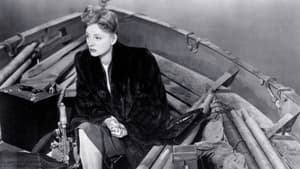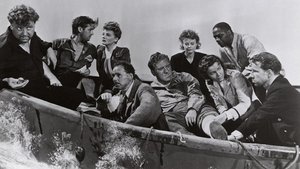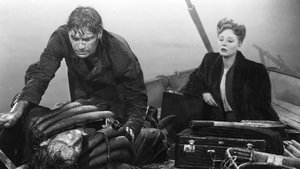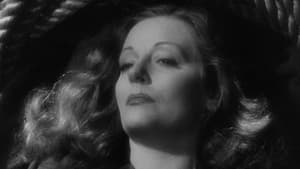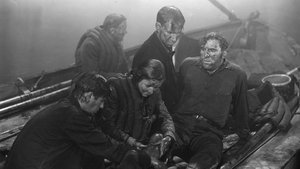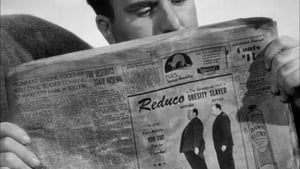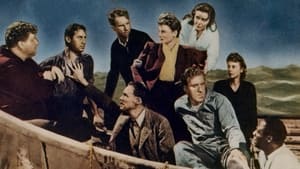Video Sources 0 Views
- Watch trailer
- Lifeboat 1944 Colorized

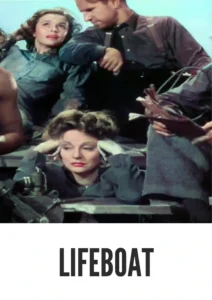
Synopsis
Table of Contents
Toggle
Immerse yourself in Alfred Hitchcock’s gripping survival drama, Lifeboat, released in 1944. This cinematic masterpiece is now beautifully colorized, offering a viewing experience that intensifies the tension and human drama. Set entirely on a small lifeboat, the film explores the depths of human nature when a diverse group of survivors from a torpedoed passenger ship must confront their prejudices and cooperate to stay alive. Starring the formidable Tallulah Bankhead and the understated John Hodiak, this HD download brings a powerful and thought-provoking film to your screen, perfect for cinephiles and anyone who appreciates classic, character-driven stories. Although no other titles are widely known, Lifeboat’s narrative simplicity underscores its profound thematic complexity.
Lifeboat unfolds after a German U-boat sinks an Allied passenger ship during World War II. A handful of survivors, including the glamorous journalist Constance “Connie” Porter (Tallulah Bankhead), find themselves adrift in a lifeboat. Among them are an industrialist, a nurse, a steward, and a German U-boat captain pulled from the wreckage.As they struggle to survive the elements and dwindling supplies, tensions rise and conflicts erupt. The survivors must grapple with their prejudices, moral dilemmas, and the constant threat of death. The presence of the German captain adds another layer of complexity, as the survivors debate whether to trust him or cast him adrift. Hitchcock masterfully uses the confined space of the lifeboat to create a claustrophobic and psychologically charged atmosphere, forcing the characters to confront their true selves. The storyline offers a stark reflection on humanity’s capacity for both compassion and cruelty in the face of adversity.
The film boasts a stellar cast who deliver powerful performances within the confines of a single setting:
- Tallulah Bankhead as Constance “Connie” Porter
- John Hodiak as John Kovac
- Walter Slezak as Willi, the German U-boat Captain
- William Bendix as Gus Smith
- Mary Anderson as Alice MacKenzie
Lifeboat transcends simple categorization, blending elements of a war drama, survival thriller, and psychological study. Hitchcock uses the genre to explore themes of morality, prejudice, and the human will to survive under extreme conditions.
Released during the height of World War II, Lifeboat served as both entertainment and propaganda, reflecting the anxieties and moral complexities of the time. Alfred Hitchcock, known for his suspenseful thrillers, used the film to explore themes of Allied unity and the dangers of complacency. Despite its limited setting, Lifeboat is a powerful statement on the human condition during wartime, showcasing Hitchcock’s ability to create compelling drama from the simplest of premises. The film remains a significant work in his filmography, demonstrating his versatility and his willingness to tackle socially relevant themes.
This colorized version of Lifeboat has been meticulously restored using state-of-the-art digital techniques, enhancing the visual impact while preserving the film’s original intensity. The colorization process involved carefully analyzing the grayscale tones of the original black and white footage to add realistic colors to the costumes, the ocean, and the actors’ skin tones. Sophisticated algorithms were employed to ensure that the colors enhanced the storytelling without overwhelming the original artistic intent. This painstaking process breathes new life into the film, making it more accessible to contemporary audiences while honoring its historical significance. While debates about colorizing classic films persist, this version seeks to introduce Lifeboat to a new generation of viewers, ensuring its continued relevance.
- : Alfred Hitchcock
- : Jo Swerling, Ben Hecht, John Steinbeck (uncredited), MacKinlay Kantor (uncredited)
- : John Steinbeck
- : Glen MacWilliams
- : Dorothy Spencer
- : 20th Century Fox
- : 20th Century Fox
- : 97 minutes
- : MP4
- : HD (1080p)
- : Compatible with most devices, including smartphones, tablets, computers, and smart TVs.
Lifeboat (1944) is celebrated for its masterful direction, compelling performances, and thought-provoking themes. Critics have praised Hitchcock’s ability to create suspense and drama within the confines of a single setting, as well as the film’s nuanced exploration of human nature during wartime. Despite some initial controversy, Lifeboat remains a highly regarded work in Hitchcock’s filmography and a testament to his genius as a filmmaker. The performances of Tallulah Bankhead and the rest of the cast have also garnered widespread acclaim, cementing the film’s status as a classic of American cinema.
- : What is Lifeboat about?
- A: Lifeboat is a survival drama about a group of survivors from a torpedoed passenger ship who find themselves adrift in a lifeboat during World War II.
- : Is Lifeboat (1944) a well-known Hitchcock film?
- A: Yes, Lifeboat is considered one of Hitchcock’s significant works, known for its unique setting and exploration of complex themes.
- : Is this version of Lifeboat colorized?
- A: Yes, this version has been professionally colorized to enhance the viewing experience.
- : What makes Lifeboat interesting for Hitchcock fans?
- A: Lifeboat showcases Hitchcock’s ability to create suspense and drama within a limited setting, as well as his willingness to tackle socially relevant themes.
- : What is the download format?
- A: The download format is MP4, which is compatible with most devices.
- : What resolution is the download?
- A: The resolution is HD (1080p), providing a high-quality viewing experience.
Watch Lifeboat Today!
